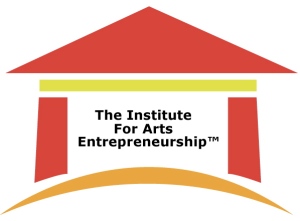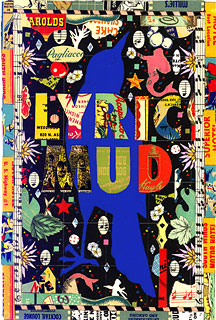When it comes to insisting that all artists becoming more entrepreneurial, James Hart and I are kindred spirits. I cannot agree more with James statement that “We need to teach our students how to have vision. Imagine the cultural implications.”
I met Jim last weekend at Columbia College’s Creative Entrepreneurship Conference. James Hart is living my dream! He and his family just returned to the United States this past year, after founding, building and finally selling a professional finishing school focused on entrepreneurship training for theater students in Norway called TITAN Teaterskole.
The International Theatre Academy Norway (TITAN Teaterskole), is truly one of a kind and its creation was, for Jim, a true labor of love. The school is now in its fifth year of operation and in the very capable hands of Brendan McCall, who left his teaching position in the acting program at the Yale School of Drama masters program to head, run and own TITAN.
Now, with that incredible experience under his belt, Jim plans on opening, in the fall of 2010, in Austin Texas The Austin Conservatory of Professional Arts, just like the one he built in Norway. It will be founded in Jim’s educational programming and philosophy which he calls The Hart Technique.
What is the Hart Technique?
The Hart Technique is a two-pronged approach to theatrical training. It is equal part Artistic technique and Entrepreneurship. Artists studying the Hart Technique have a foundation of artistic thinking. They know how to think, as artists. They are sensitive to the impulses that move them and have vast imaginations. They also have a practical viewpoint which stems from market realities. This later viewpoint, which is unique in American theatre training, enables graduates to aide their communities, to be necessary as artists, to fill gaps in community cultural offerings. They are fiercely determined and committed to overcoming career obstacles and know how to both lead and follow. Because of this entrepreneurship skill set, graduates are more able to make a living via their creativity. IMAGINE THAT!!!
The best way to learn about The Hart Technique is to experience it and practice it yourself. Workshops are offered in a wide range of venues–in theatre companies, colleges, universities and privately.
What makes the Hart Technique different from other theatre training?
The majority of theatre training programs in America are offering all arts technique and no business skills. This typical path is usually comprised of a version of the Stanislavski technique and its normal support classes. However, we, as educators, know that this path leads to widespread unemployment. Each reader should ask themselves, if we know that this technique leads to under and unemployment, why is American theatre training still following this standard path? I believe the reason lies in the fact that schools must be marketable. They have found a system that generates student numbers, but not students with a number of jobs.
How is the Hart Technique of service to society?
One of the facets of The Hart Techniques is that students are guided to discover their “voice” or unique perspective or way of expression. Graduates have this unique expression, coupled with entrepreneurial skills. As entrepreneurs, they know how to study their markets and communities and find gaps. They can then fill these gaps, eventually creating niches.
Graduates who know how to create opportunities for themselves, inevitably create opportunities for others. As these entrepreneur artists create original enterprises for profit, they inevitably create jobs.
What skills do graduates of The Hart Technique have?
Graduates have entrepreneurial skills. They have a knowledge of creating and adhering to a budget, how to create a mission statement, how to lead themselves and others, how to market themselves (and generate press as they do), and a wide range of other business related skills. Artistically, they know how to have vision and build that vision into a concrete reality. They are masters of brainstorming and can follow their creative impulses without fear or judgement. They understand text analysis and how to effectively play a role. Not only can they play a role, but they can direct others in the playing of roles. Often times, our graduates direct others in roles they have personally written. In brief, our graduates have the skills to compete for existing work, but have the ability to create their own.
What jobs can a graduate expect to have?
Graduates of The Hart Technique have created artistic companies (theatre and production), have sponsored gallery showings, done standup, acted in and directed films and professional theatre. Many do go on to compete for commercial opportunities of a standard nature. Still more go on to create their own opportunities, profiting as they do.
Is The Hart Technique applicable ONLY for theatre artists?
Absolutely not. The Hart Technique is applicable towards any medium of artistry AND enables artists to hop from one medium to another.
What if I am not interested in starting my own business or being a leader?
None of us knows what five years down the road brings us, much less tomorrow. One constant in life is change. Why limit oneself? Leadership skill enables one to lead oneself in the most effective manner possible (in addition to others). The Hart Technique helps artists develop discipline–the sort of discipline of a marathon runner. That is a skill set that will serve one throughout their life.
Why are more schools NOT offering similar training?
Most theatre training programs in America copy what the big, successful graduate training programs are doing (There is some exception to this, of course). Knowing that this typical system (all arts and no business) leads towards widespread unemployment, one must ask, “is it ethical to continue teaching this typical curriculum”?
In time, more schools will begin to offer such entrepreneurial training in their curriculums, as it is a system that generates employment. American theatre training NEEDS to go in this direction. This sort of training stimulates new voices with perspective. These individuals have the tehcnique to build their ideas and the business technique to make a living.
Some schools believe changing their curriculums to be too risky, if they are generating enough student interest now. However, to those institutions and individuals, I say, “Post your graduate career success record. Make public how successful your curriculums are (or are not).
Curriculums such as The Hart Technique serve students and institutions alike. Graduates have a higher likelihood of working and schools can boast of all of the graduates who work almost immediately out of their programs.
Interested in enrolling in the new school? Questions about the program, tuition, referring a student?
Contact Jim at:jim@harttechnique.com
Phone: 512.410.9335
Fax: 512.380.0155
About Jim Hart
Jim Hart is an award-winning actor, director and producer. His work has been seen in America, Russia, Norway and Taiwan.
As a director, he has directed numerous Tony Award-winning and Hollywood actors, including Marian Seldes, Roger Rees, Dylan Baker, Kerry Butler, and others. He has directed classics of Shakespeare, Chekhov, Marivaux, Gogol, Miller and more, including a large number of world-premiere productions. He is currently directing “The Story of a Mother”, an animated tale, and “On Death and Dying”, a documentary on our culture’s many perspectives on death and dying. He serves as Producer and Artistic Director of Sleeping Hero Productions.
Hart is the founder and former Dean of TITAN Teaterskole (The International Theatre Academy Norway) in Oslo, Norway and former artistic director of TITAN Teatergruppe, a professional theatre company—both of which are located in Oslo, Norway.
As an actor, Hart has performed in a number of venues including Williamstown Theatre Festival, Yale Repertory Theatre, Utah Shakespearean Festival, Dallas Theatre Center, Shakespeare Festival of Dallas, St. Louis Shakespeare Festival, (where he received the Judy Award for his performance of Puck), Theatre Alliance in D.C., and Internationally in St. Petersburg, Russia and Taichung, Taiwan.
Hart is a Fox Fellow, having received a grant to study ritualistic mask dancing in Bali and India. He spent nearly a year in Asia, studying ritualistic theatre in Nepal, India, Taiwan, Thailand, Indonesia and Hong Kong, and is one of the founders of The World-wide Art Collective, the largest theatre festival in the history of Taiwan.
He served as founder and Artistic Director of the New York-based theatre company Etudes Workshops (2001 to 2003). Etudes explored multi-cultural theatre forms of the Fantastic (focusing on rhythm, physical aesthetics, and masks and puppets). This venue, drawing teachers from a multitude of disciplines and mediums within New York, exposed artists to varied artistic aesthetics and provided ground for new collaborations to occur.
Hart’s teaching credits include The International Theatre Academy Norway, Yale School of Drama (Graduate school), New York University, Yale University (undergraduate program), the Lee Strasberg Theatre Institute, Tufts University, Univ. of Alaska at Anchorage, Fu Ren Univ. in Taipei, Taiwan, Harlem School of the Arts, Capital Hill Arts Workshop in D.C, Classical Theatre of Harlem, University of Massachusetts Amherst, Utah State University, Rowan University, Peridance in NYC, Kirkenaer Ballettskole (Oslo), and others.












